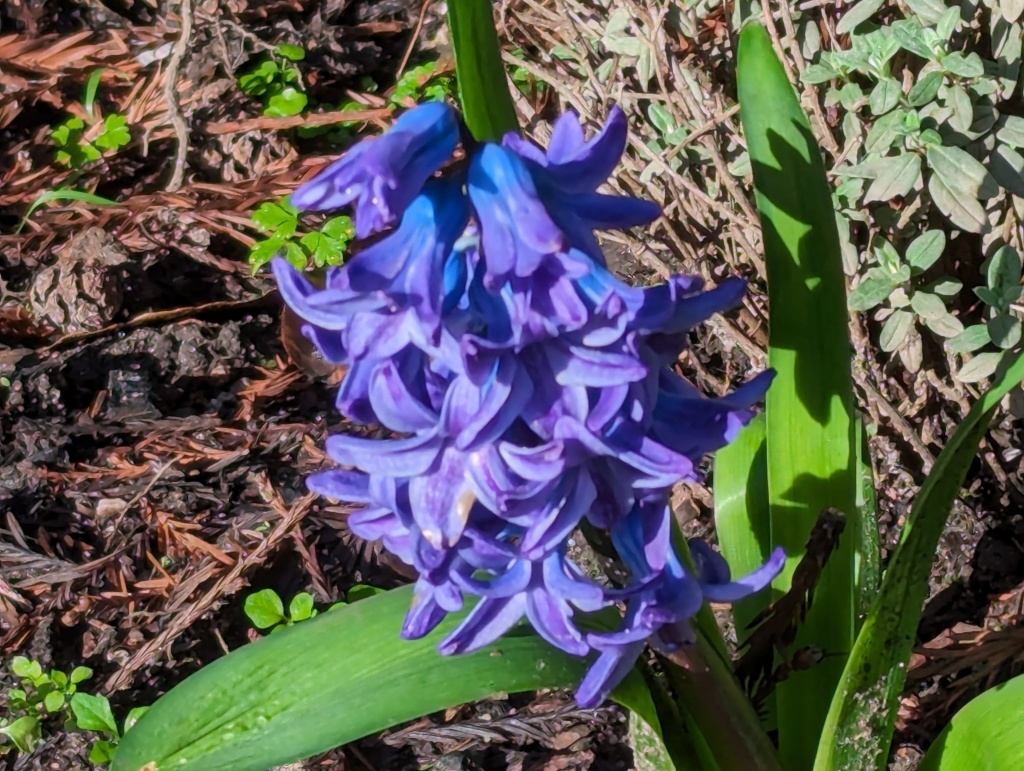
If their bulbs got into the garden early enough last autumn, Dutch hyacinth, which are hybrids of Hyacinthus orientalis, are now blooming with cartoon shades of red, blue, yellow, purple, pinkish orange, pink and white. The small, surprisingly fragrant flowers are neatly arranged on plump, bottle-brush shaped flower trusses up to eight inches tall. Their typically arching, rubbery, strap shaped leaves look like small lily-of-the-Nile leaves. Some types have more vertical foliage.
Like many bulbs and bulb like plants, hyacinth are unfortunately not reliably perennial in such mild climates. They prefer cooler winters. Consequently, they are typically grown only as annuals. However, I am aware of hyacinth that not only bloom annually, but have been multiplying nicely over the years in a few local gardens. Their flowers spikes are never as full as they were in their first season, but are appealing nonetheless. I actually prefer the less refined style of naturalized hyacinth.
French Roman or Roman hyacinth, Hyacinthus orientalis albulus, are still somewhat rare, but should be more common since they naturalize more reliably without cold winters. Each bulb produces a few flower stems with smaller and more loosely arranged pink, pale blue or white flowers.
Large hyacinth bulbs are easily forced to bloom suspended just above water by small stones in bowls, or individually in hyacinth glasses (vases that hold bulbs just above water). Forced bulbs should be kept in the dark until rooted, and can be moved out as foliage appears. They are as colorful as tulips and as fragrant as narcissus; but sadly, are not likely to survive after being forced.